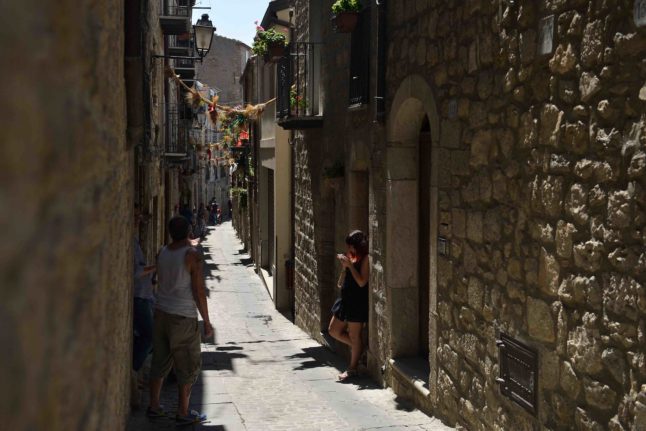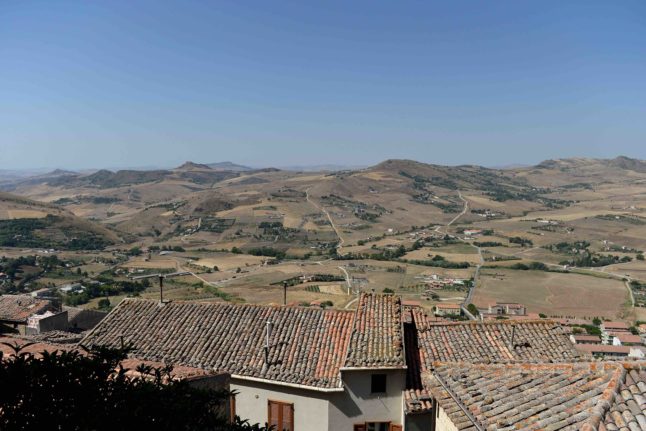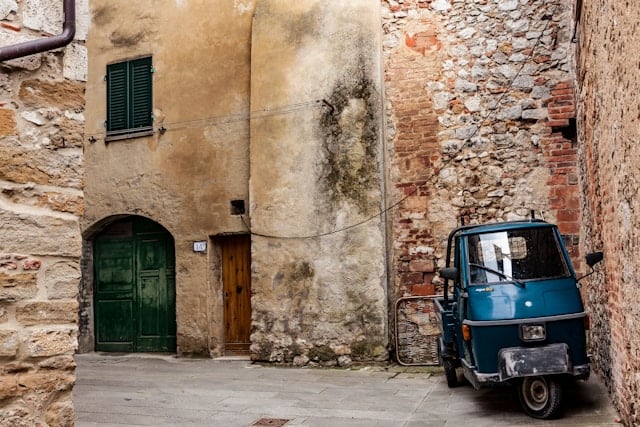In the past few years, dozens of depopulated towns across Italy have sold cheap and one euro homes for a song, triggering a property frenzy.
But with soaring inflation and sky-high building costs, the bonanza might be nearing its end, as people longing to live in a picturesque rural spot are starting to look at alternative options.
One of the first towns to sell one euro homes in Sicily was Gangi, where over 500 crumbling buildings have been offloaded for the cost of an espresso since 2015, while more than 1,000 fixer-uppers have been sold.
READ ALSO: How to avoid hidden traps when buying an old property in Italy
“The best ones, particularly those in need of minimal fixes within our beautiful historical center, have all been snapped up”, says former deputy mayor Giuseppe Ferrarello.
“There are still some good deals regarding cheap homes, but prices have risen due to the high demand,” he says.
In Gangi, as in other Sicilian towns such as Sambuca and Mussomeli that have run similar schemes, what you could previously have bought for $15,000 – like a nice 50 square meter dwelling with a panoramic balcony in need of minimal renovation – now costs at least $20,000.
Soaring inflation, plus a lack of builders due to Italy’s superbonus tax breaks aimed at upgrading homes and making them ‘green’, has made it hard, and more expensive, to find construction teams available for a swift restyle.
READ ALSO: PROPERTY: How Italy’s building bonuses are delaying the restyle of one-euro homes
In the Tuscan town of Vergemoli where abandoned stone cottages scattered across five districts have been bought up predominantly by South American families for a symbolic one euro, mayor Michele Giannini is now mapping more areas of the municipality to identify old houses long abandoned by locals which could be placed on the market.
“We’ve run out of one euro homes at the moment, which is actually a very good thing because it means our scheme was successful, but there are still so many dilapidated properties which could be given a new life and we still need new folk to revitalize the place,” he says.
As the rising cost of living may soon spell the end of Italy’s cheap homes frenzy, people are opting for other solutions; mainly rentals of furbished, turnkey properties and country homes which are cheaper than those in the old town and even come with a patch of land, including olive groves and plots.

In Troina, a Sicilian town which two years ago placed one euro and cheap homes on the market, renting a cozy three-floor apartment on the outskirts of the old district where all the main shops and grocery stores are located starts at €400 per month.
In the Piedmontese mountain village of Carrega Ligure, meanwhile, a cozy farmer’s house can be rented for €250 per month.
Jacques Noire, a French retiree from the countryside around Nimes, says that not having found an available cheap home in Troina (as they all sold out last year) ended up being a godsend.
“I came with the idea of snatching a house for some €10,000, but I found none, then I bumped into a local at the bar, we started chatting, somehow I understood his cousin was renting her entire ancient palazzo, far from the old neighbourhood near the fields, for like €600 euros per month,” he says.
READ ALSO: OPINION: Why Italians aren’t snatching up their country’s one-euro homes
“By 8pm, I signed a lease contract for six months and now I come and go, spending three months in Sicily and half in France”.
Noire says the plus points of a rental are not having to deal with head-splitting bureaucracy, a tedious renovation, hidden costs and the hassle of liaising with construction teams.
Word of mouth is helpful, but convenient rentals can be also be found online.
In Latronico, set in deep Basilicata, Biccari in rural Puglia, and Carrega Ligure in Piedmont, the rising popularity of rentals has pushed local authorities to advertise on their websites not only old dwellings for sale, but also those available for lease.
“I think it’s extremely helpful giving people interested in moving here or spending their holidays the chance to have several options at hand, both for sale and for rent, and a direct contact with the owners.
“When deals are signed it’s nice to see them together at the bar celebrating, or having dinner in the middle of an alley”, says Latronico’s deputy mayor Vincenzo Castellano.
The municipal platforms that advertise the properties serve as ‘virtual meeting places’ where original owners and interested tenants can get in touch.
In other towns that have run out of one euro and cheap fixer-uppers, people have gone on a hunt for the ‘ideal’ rural home surrounded by pristine sheep-grazing fields and orchards.
Located a few kilometers from the ancient districts, these ‘bucolic’ farmer’s dwellings are up to 40 percent cheaper than those located in the historic center, and come with patches of land.
In the countryside close to Maenza, a village mid-way between Rome and Naples, a few 120 square meter villas with patio, barbecue, lemon orchards and olive groves, in no need of restyle, have been snapped up for as little as €40,000.



 Please whitelist us to continue reading.
Please whitelist us to continue reading.
Member comments